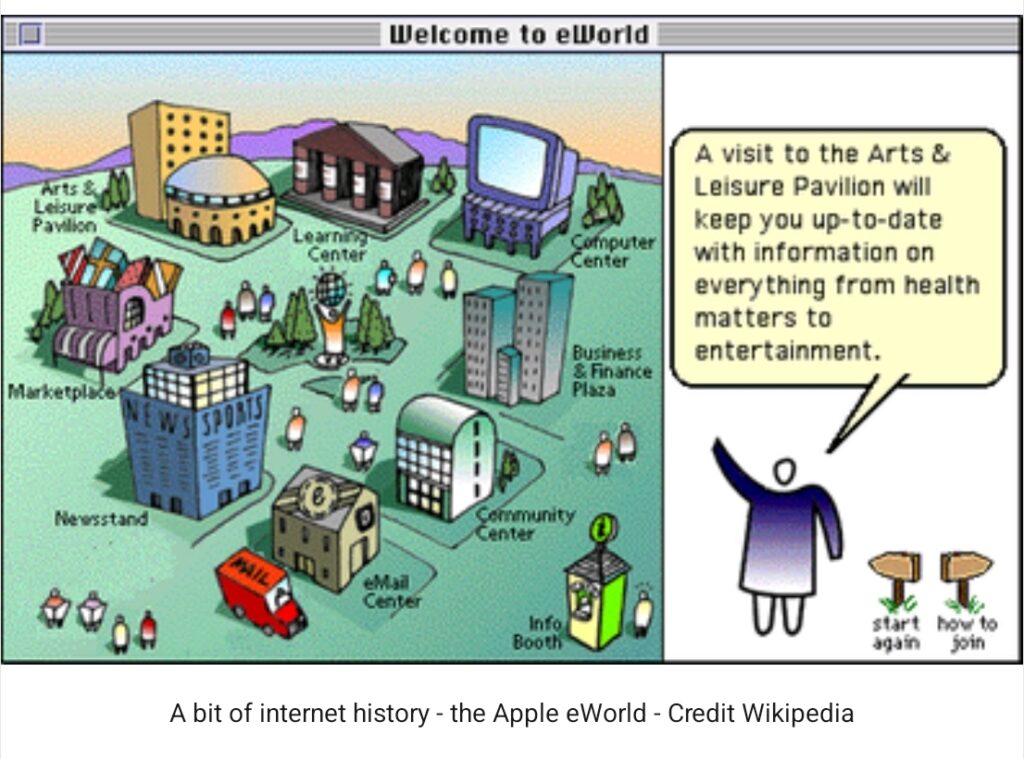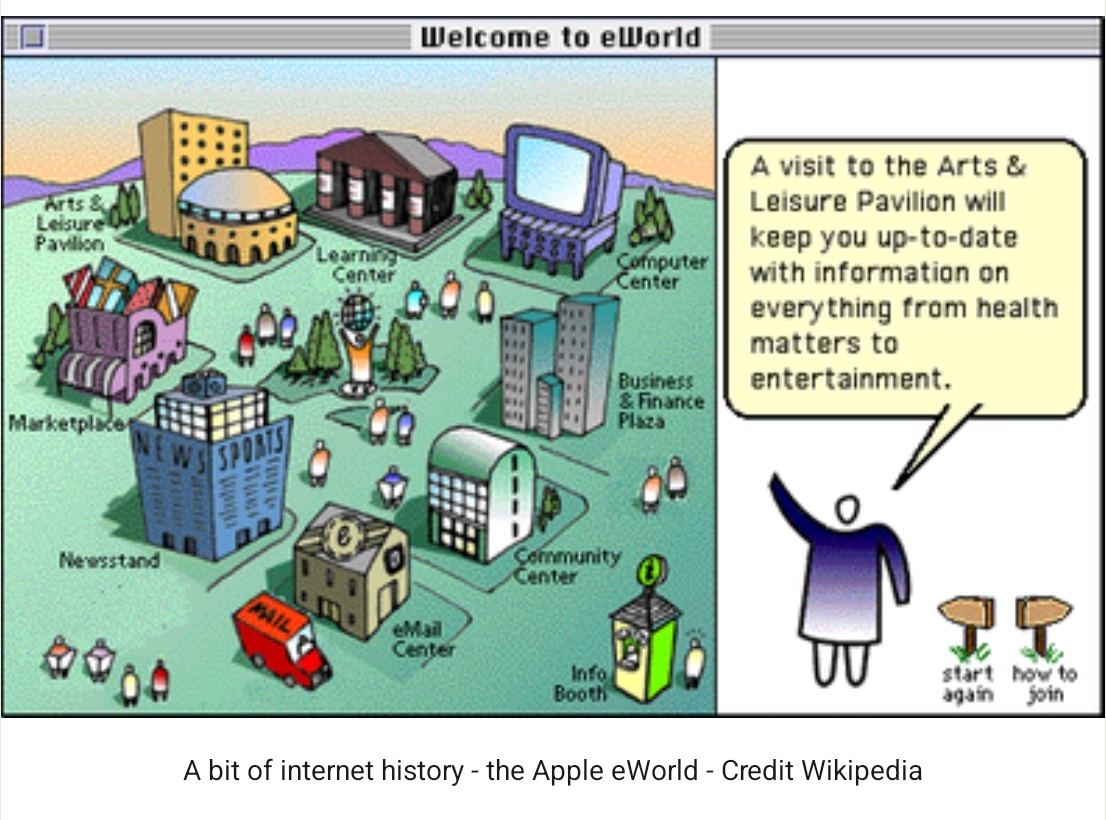
Does anyone remember AOL’s walled garden internet service or even Apple’s cutesy eWorld, with its simplistic town square analogy? I remember it well and it was not very exciting for long, unless you were styling it and accessing it through an Apple Newton as I did, major geek creds!
These, along with others, were attempts to control the access to the internet and gain more value than was appropriate for tech companies providing internet service.
Of course, the Apple walled garden approach continues to this day, with an evolved model in which iCloud comes with a freemium offer. But at least nowadays it comes with practical features like backup. Yet even so, its demise is already being heralded by the massive market share of the much more open Android ecosystem.
But what does all this ancient wisdom tell us as an analogy for the world of blockchain powered digital transformation?
While blockchain technology was originally ideated to create a fairer and more open commercial world, we could decide to portray today’s blockchains as walled gardens, giving access to only one consensus model, run by one community or company. In fact, many are actively competing against each other to provide the fastest ledger or more easily coded smart contract. Taking it further, we could say that certain blockchains are purposefully trying to dominate a market to gain greater value than they deserve. I would give the Maersk shipping supply chain’s ownership model as an example, where a market leader is arguably attempting to dominate the market in the guise of providing an open system. Another would be private blockchains in general, which provide quasi immutability at best, even though they are a step up from vanilla distributed databases in terms of consensus.
One place the analogy falls apart of course is that inter blockchain capabilities are starting to develop. Atomic swaps, APIs of different varieties, crypto exchanges and blockchain agnostic platforms, such as our own Thrupny, are growing. Even a brilliant thing call Even, more of that later. However, as with the old world of internet ISPs, it will take time for a record or application set on one blockchain, to be easily immutably reflected on another. Much like in the days of walled garden internet, it took a while but eventually all the content was available on the provider’s web site, AOL being an example.
So, what to do now when choosing a blockchain powered platform? Well first thing is not to spend too much time on evaluation and upfront waterfall style planning. Going for options that are practical and presented to you with the factors you need is a good idea, as long as you expect an agile, iterative process. This means that you can be practical about achieving your goals today, while keeping the door open for major changes down the line. So, choosing a partner who can provide ongoing development, or getting in house capabilities, based on open source standards, is a good idea. Too many projects are looked at as stand-alone one offs that have a defined end. But does the market stay still and consequently do any organisations’ goals? Change is the only one immutable…aside from death and taxes.
But if you have a longer view, do look at capabilities that can enable you to break out of one blockchain protocol and allow cross chain interaction. A reason for doing so is that the market is so young and evolving at such a pace that, just as the old ISP world, the big guys of today may not be the only options tomorrow, or even be big. For example, will Ethereum be able to execute its long-trumpeted changes to speed up and lower costs in time to stay ahead of the many pretenders who say they have already solved them, like Waves, NEO, and NEM.
Especially look at platforms that are in effect second layer protocols, built on top of existing blockchains. A great many of the solutions built on Ethereum are examples here. Also look for blockchain agnostic solutions. BLOQ has been the initiator here and, as I was saying, our own Thrupny platform has plugins for multiple blockchains, including Bitcoin, Ethereum, NEM, Stellar and others. Above all, don’t get stuck on arguments about speed or transaction costs, as most of these turn out to be time wasters, the overall business case for blockchain platforms will compensate for most differences here.
So lets be even handed about blockchain protocols. Which reminds me, what about this Even thing? Well here is where I get quite excited, even more so than when I received my two floppy disk with eWorld in them. So excited in fact that Thrupny is partnering up with EVEN Foundation OÜ̈ to extend our cross blockchain creds. To get to the bare bones, Even is building a cross-chain interaction protocol that will enable not only transaction records but also smart contract code to gain consensus across chains at high speed. For Thrupny this is an extension of our existing capabilities and gives us access to some chains we do not deal with today in the short term. But in the long term, it gives the possibility to bring out more flexible solutions. Examples include building distributed data storage on Even’s Safe of Digital Assets product and using Even’s framework to build cross chain smart contract dApps.
All in all, as we enter the second decade of the blockchain’s lifespan, we can see a lot of change ahead and a prudent methodology for organisations is to deliver now, with an Agile approach, leaving the door open for change later.
Image Credits: https://en.wikipedia.org/wiki/EWorld
